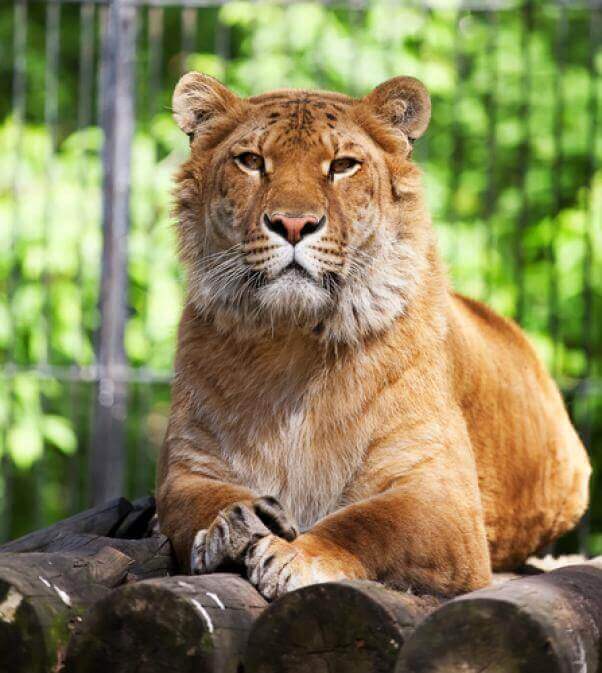What Is Interspecies Breeding?
Ask Science on the possibility of hybrids, chimeras, and even half-human/half-vampire creatures. Read on!
Lee Falin, PhD
Listen
What Is Interspecies Breeding?

Lately, it seems as though every young girl’s dream is to marry someone who isn’t quite human. Popular culture has witnessed a flood of books and movies that deal with the results of unions between humans and things that aren’t quite human.
Vampires fathering children with humans, dogs with human eyes and emotions, and even werewolves who fall in love with half-human, half-vampire babies. Do such genetic mismatches have any hope of finding true happiness together? If such things are possible, why hasn’t the earth been overrun by half-rabbit, half-vulture monstrosities?
Groups Within Groups Within Groups
Historically, scientists have used a process called Taxonomy to arrange different organisms into groups and determine how they are related. For example, a cavemen scientist might have the put plants he discovered into two groups: “These plants make Ungar sick.” and “These plants don’t make Ungar sick.”
Over time, scientists started using other characteristics to create these groups and were delighted to discover that not only could they make more groups, but they could further divide the groups into subgroups and even subgroups of subgroups. The wild and crazy scientists continued on in this vein until pretty soon they had an entire hierarchy of classifications.
Taxonomic classifications typically start with the most obvious characteristics first. For example, it’s obvious that a wolf is an animal, so we would say it belongs in the animal kingdom, or more scientifically, “Kingdom Animalia.” (Traditionally taxonomic groups are named using Latin, probably to make them easier to use in magic spells). Each Kingdom is further subdivided into Phyla, which are then divided into Classes. Classes are divided into Orders which are divided into Families which are divided by Genus and then finally, Species. Whew.
Typically when scientists refer to an organism, they do so using its genus and species names. For example, the gray wolf is a member of the Canis genus and its species is lupus. So the scientific name for the gray wolf is Canis lupus, or C. lupus. (Note that the genus name is capitalized and italicized, while the species name is neither.
Historically, these classifications were made based on physical characteristics or behaviors. However once scientists gained the ability to sequence genomes of organisms, a whole new method of putting things into groups opened up.
Phylogenetics is a branch of science that uses the genetic sequences of organisms to try and deduce how they are related to one another. For example, by comparing the genetic sequences of different species, scientists have determined that humans have more in common genetically with apes than with slugs (though some humans might be exceptions to that rule).
As with all areas of science, however, there are a couple of points of disagreement about the proper way to handle this classification. One point of contention involves just which parts of an organism’s genetic sequence should be used in these comparisons. Another difficulty is deciding just exactly what is a species. In other words, just how different do two organisms have to be in order to be considered different species? It’s obvious that a wolf and a goldfish are different, but what about two different kinds of mosquitos?
The Secret Lives of Birds and Bees
Before we go any further, we need to understand how reproduction occurs. We’re just going to discuss things at the cellular level, so if you want the higher-level details, ask your parents.
When most multi-cellular organisms reproduce, the reproductive cell (or gamete) of one organism fuses with the reproductive cell of another organism. The cell created by this fusion is called a zygote. The zygote contains a mix of genetic information from each parent. After the zygote is formed, it starts dividing into new cells.
Each of these new cells is genetically identical to the zygote, meaning that every cell of the organism will contain the same mix of genetic information from each parent.
Ligers and Mules and Geeps, Oh My!

In our previous example, we were assuming that the two organisms involved in this process were from the same species. But what happens if two different species are involved?
There are two terms that are used to refer to an organism that is a mix of two different species: hybrid and chimera (pronounced Kai-mare-uh). Although many people use these terms interchangeably, they have distinct meanings to scientists.
A common example of a hybrid is the mule. In order to create a mule, a reproductive cell of a donkey is fused with the reproductive cell of a horse. The resulting zygote has a mix of donkey and horse DNA. Since every cell of an organism is a copy of the zygote, this means that every cell of the mule contains a mix of horse and donkey DNA.
Some hybrids occur naturally, while others are a result of human intervention. Sometimes that intervention is simply playing matchmaker, (ensuring that the organisms are in the right place at the right time), while other times it involves manual intervention, such as artificial insemination of animals or manual pollination of plants.
Unlike hybrids, chimeras are organisms created by merging non-reproductive cells of two or more different organisms. In 1984 scientists working at Cambridge were able to take cells from a sheep embryo and merge them with cells of a goat embryo. The organism that grew from this amalgamation was a sheep-goat chimera (or “geep” as some people referred to it).
Unlike the mule, where each cell contains a mix of horse and donkey DNA, every cell in the geep is either a sheep cell or a goat cell. This means that parts of the animal looked like a sheep and parts of it looked like a goat. In fact, the name “chimera” comes from a mythological creature mentioned in Homer’s The Iliad, described as having “in the fore part a lion, in the hinder a serpent, and in the midst a goat”.
So to summarize, every cell of a hybrid is genetically identical, and contains a mix of DNA from each of its parents. But each cell of the chimera contains the DNA of one parent or the other, but not both.
A Pair of Star-Crossed Lovers
An interesting note about hybrids is that they typically don’t get their own species name. A mule’s proper scientific name is Equus asinus x Equus caballus, which means a cross between a donkey (E. asinus) and a horse (E. caballus). Is this some form of hybrid discrimination by scientists or is something else going on here?
Actually one of the things that most scientists agree on about the definition of a species is that organisms of the same species should be able to reproduce. Since mules (with very rare exceptions) are infertile, they are disqualified from the species name game.
The reason for this infertility is typically related to chromosomal differences. Horses have 64 chromosomes, while donkeys have 62. These mismatched chromosomes tend to cause problems during meiosis, when reproductive cells are being created.
Other factors that might conspire against the romance of two star-crossed organisms include differences in mating rituals, habitats, food preferences, mating times, and physical incompatibilities. These inconveniences are sometimes collectively referred to as “reproductive isolation.”
So What About That Half-Vampire Baby?
So the next time you and your friends are watching a movie together where a werewolf falls in love with a vampire, you can smugly reach for the popcorn and declare, “A Canis lupus x Homo sapiens mating with a Homo lamia*? That’s absurd.”
#Lamia is the closest Latin I could find to “vampire.” Lacking more direct evidence, I can only assume that vampires are in the same genus as humans.
Liger image courtesy of Shutterstock.

